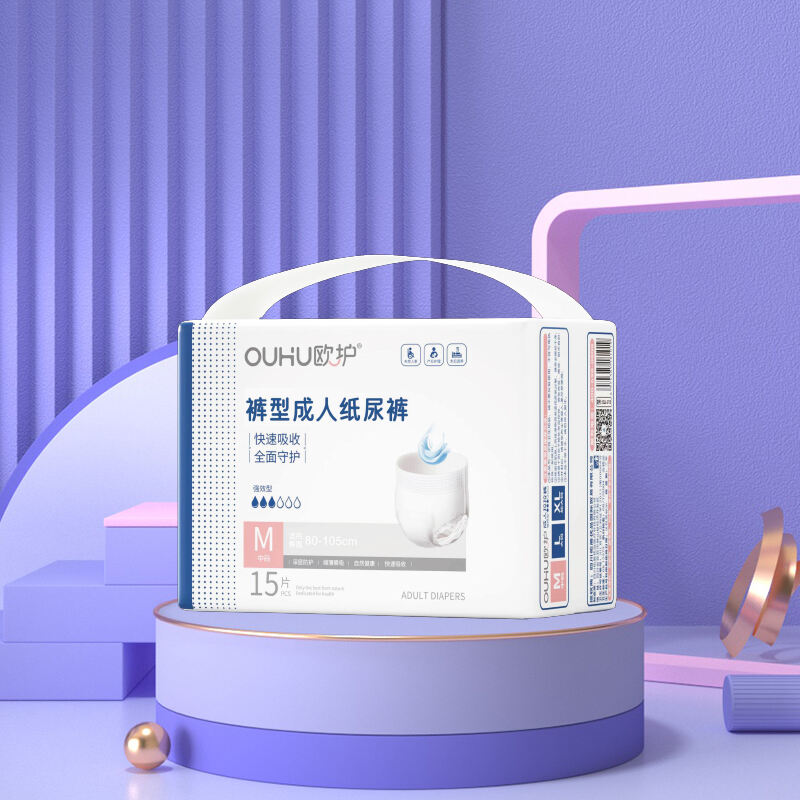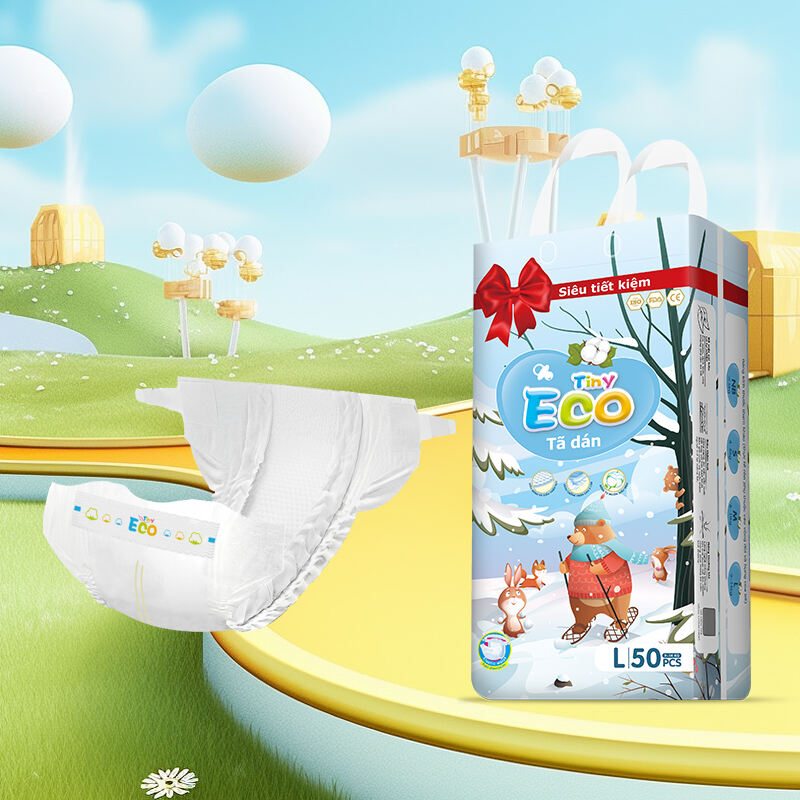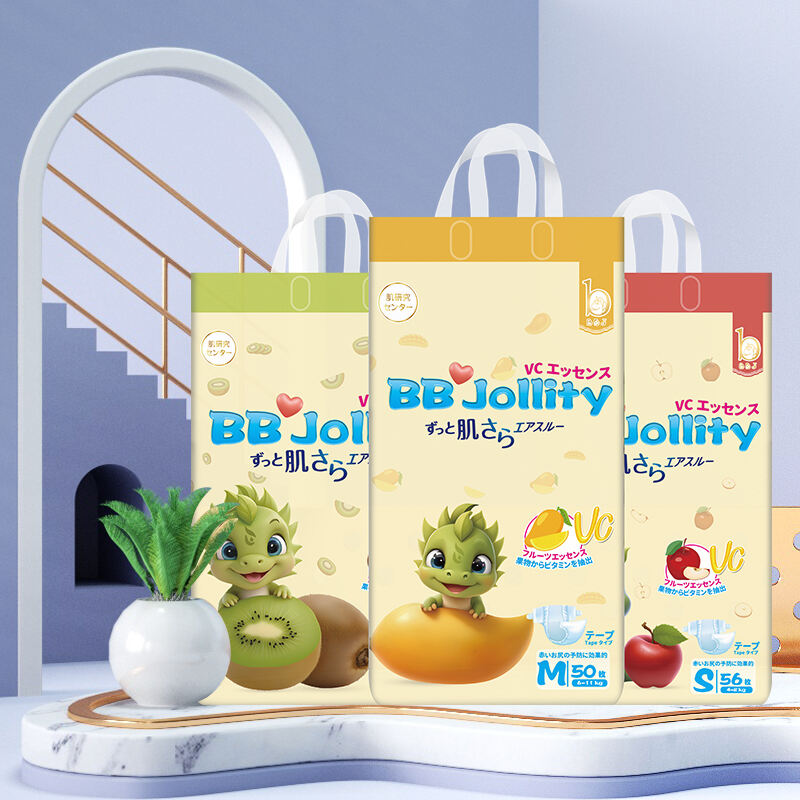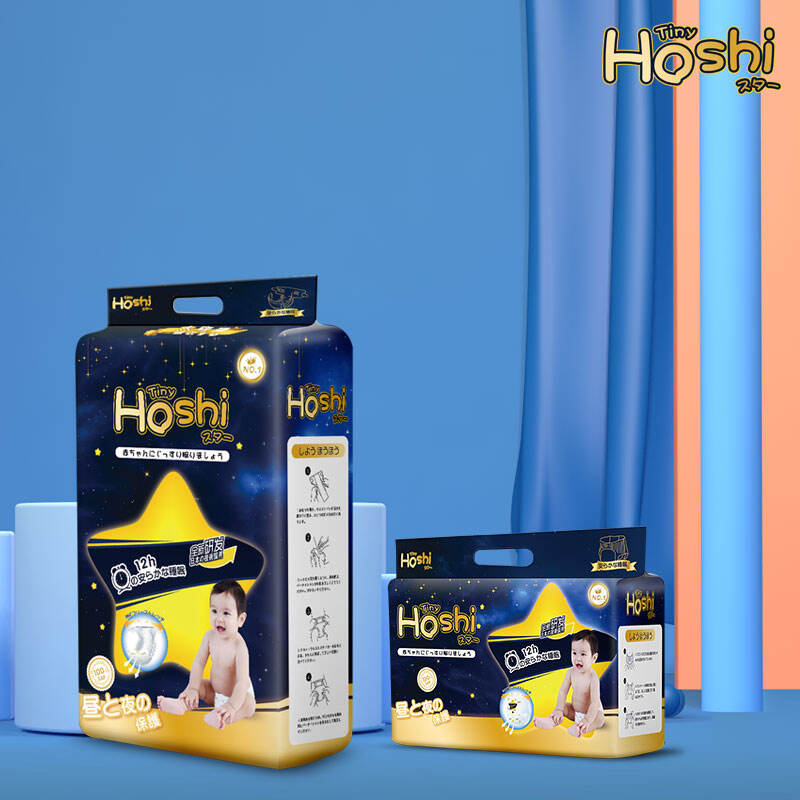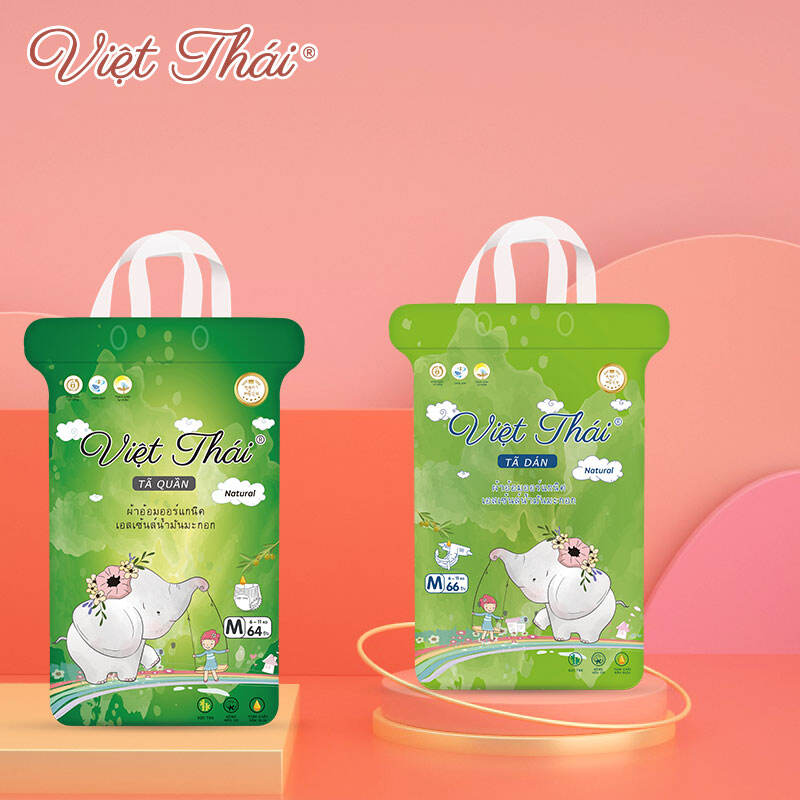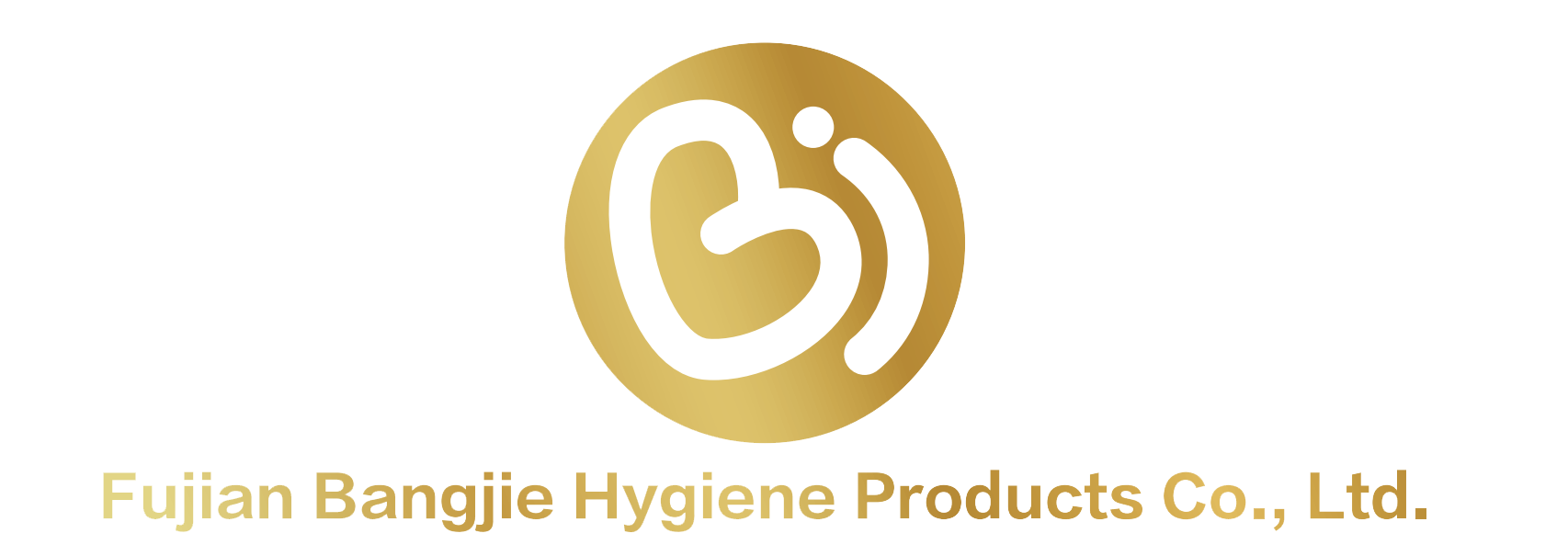Kannattavuuden tasapainottaminen: Hintasodat vs. Brändiarvo vaippamarkkinoilla
Vaippojen markkinoiden dynamiikan ymmärtäminen
Vaippojen markkinat ovat kasvamassa merkittävästi, ja niiden vaikutuksena ovat erilaiset segmentit, kuten vauvan ja lasten vaippojen markkinat. aikuislapsiat - Mitä? Vuonna 2023 markkinoiden arvo on noin 63,21 miljardia dollaria, ja niiden odotetaan kasvavan 110,03 miljardia dollaria vuoteen 2033 mennessä 5,7 prosentin vuosittaisen kasvun (CAGR) nopeudella. Markkinoiden dynamiikkaan vaikuttavat monet tekijät, mukaan lukien erilaisten vaippojen kysynnän kasvu. Vauvan vaipat ovat yleisiä väestön kasvun ja kaupungistumisen vuoksi, kun taas aikuisten vaipat ovat yleisiä, koska yhä vanhemmat ihmiset kärsivät inkontinenssista.
Pyyhkeiden markkinoiden uudellemuodostamiseen liittyvät keskeiset suuntaukset ovat muun muassa ympäristöystävällisten tuotteiden suuntaus, jota ohjaavat kuluttajien kestävyyssuositukset. Teknologiset innovaatiot, kuten älykkäät vaipat, joissa käytetään antureita terveyden seurantaan, merkitsevät uutta mukavuuden ja toimivuuden aaltoa. Lisäksi verkkokaupan kanavien lisääntyminen edistää markkinoita parantamalla kuluttajien saatavuutta ja monipuolisuutta. Valmistajat mukautuvat jatkuvasti näihin suuntauksiin tarjoamalla biologisesti hajoavia vaihtoehtoja ja hyödyntämällä digitaalisia alustoja vastaamaan kuluttajien muuttuviin odotuksiin ja varmistamalla siten kestävän markkina kasvun.
Hinta- sodat vaippamarkkinoilla
Hinta- sodat vaippamarkkinoilla voivat muuttaa merkittävästi alan dynamiikkaa, ja aggressiiviset hinnoittelustrategiat johtavat usein tuotannon tuottoisuuden vähenemiseen ja tuotemerkkien markkinaosuuksien muuttumiseen. Kun yritykset laskevat hintojaan kilpailuetua saamiseksi, se voi lisätä myyntiä lyhyellä aikavälillä, mutta usein voittojen supistumisella. Viimeaikaisten liiketoiminta-arvioiden mukaan nämä hintasota-asemat ovat pakottaneet joitakin vakiintuneita tuotemerkkejä tarkistamaan hinnoittelustrategiansa, mikä on joskus johtanut tilapäisiin markkina-aseman menetysten seurauksiin, kun ne yrittävät säilyttää myyntimäärän uhraamatta voittojen
Näihin hintasoihin vastatakseen johtavat vaippa-brändit ovat käyttäneet useita strategioita säilyttääkseen markkina-asemansa. Yksi yleinen lähestymistapa on tuotteiden eriyttäminentarjoamalla vaippoja, joilla on ainutlaatuisia ominaisuuksia, kuten lisääntynyt imeytymisvoima tai iholle suotuisampaa. Lisäksi tuotemerkit lisäävät arvoa lisäämällä lisäominaisuuksia, kuten kosteuden indikaattoreita tai hipoallergeenisiä materiaaleja, erottaakseen tuotteitaan. Toinen taktiikka on luottaa asiakkaan asiakasohjelmiin, joissa asiakkaat saavat kertaa ostoksia tarjoamalla alennuksia tai etuja. Näiden strategioiden yhteisenä tavoitteena ei ole ainoastaan säilyttää markkinaosuutta, vaan myös varmistaa asiakkaiden pysyvä uskollisuus myös kilpailukykyisten hinnoittelumahdollisuuksien oloissa.
Merkkien luotettavuuden merkitys vaippa-alan alalla
Brändin eheys on kuluttajien luottamuksen luomisen kulmakivi vaippa-alan alalla. Tämä sisältää tiukkojen laatu- ja turvallisuusvaatimusten noudattamisen sekä tuotantomenettelyjen avoimuuden. Viimeaikainen kuluttaja-analyysi osoitti, että 85% ostajista pitää tärkeänä ostamista korkean luotettavuuden osoittavilta tuotemerkkeiltä, jotka yhdistävät nämä arvot laadunvarmistukseen ja turvallisuuteen. Yritys, joka kehittää avointa suhdetta ja jakaa avoimesti tuotanto- ja eettisiä käytäntöjään, voi parantaa merkittävästi asiakkaan uskollisuutta. Tämä on korvaamaton asia markkinoilla, joilla kuluttajien luottamus voi edistää pitkän aikavälin menestystä ja luoda uskollisen asiakaskunnan.
Toisaalta tuotemerkin luotettavuuden heikentäminen voi aiheuttaa vakavia pitkäaikaisia seurauksia. Brändit, jotka laiminlyövät laadun tai eivät noudata eettisiä normeja, voivat vieraantua asiakkaistaan ja heikentää brändin mainetta. Lisäksi asiakkaat voivat joutua kärsimään taloudellisista seurauksista, kun he kääntyvät luotettavampia tuotteita tarjoavien kilpailijoiden puoleen. Toiminnanalan raporttien mukaan yritykset, jotka eivät ole noudattaneet luotettavuustoimenpiteitä, ovat vähentäneet markkinaosuuttaan jopa 20 prosentilla. Tämä korostaa merkkien arvojen suojelemisen merkityksen merkitystä paitsi olemassa olevien asiakkaiden säilyttämiseksi myös merkkien pitkän aikavälin elinkelpoisuuden varmistamiseksi kilpailukykyisessä vaippa-alalla.
Tuotteen kohokohdat: Vaippojen myynti
Housujen tyyppi Aikuisten vaippojen käyttö on ratkaisu aikuisille, jotka tarvitsevat inkontinenssivalmisteita. Nämä vaipat ovat suunniteltu mukavasti ja helposti käytettäväksi, ja ne muistuttavat tavallisia alusvaatteita ja viehättävät niitä, jotka pitävät tärkeänä hienovaraisuutta ja helppokäyttöisyyttä. Nämä vaipat ovat erityisen hyödyllisiä liikkumisongelmista kärsiville ihmisille, koska ne varmistavat heidän pysyvän arvokkaina ja mukavina päivittäisissä toiminnoissaan.
Mikrovaippa on yhä suositumpi, koska se imee vettä ja on hienovarainen. Nämä vaipat ovat täydellisiä vauvoille ja pikkulapsille, koska ne ovat mahdollisimman kuivia ja vähäisen suuria. Koska vanhemmat vaativat yhä tehokkaampia, mutta huomaamattomia ratkaisuja lapsilleen, Micro Diapers vastaa markkinoiden tarpeisiin yhdistämällä kehittyneitä imeviä materiaaleja ohuen profiilin kanssa.
Vauvan vaippojen alalla kertakäyttöisten ja kangaslajien välinen valinta korostaa kuluttajien erilaisia mieltymykset. Keräilylaput ovat käteviä ja hygieenisiä, ja ne ovat ihanteellisia kiireisille vanhemmille tai niille, joilla on vain vähän pääsyä pesulaan. Muuten kankaat ovat ympäristöystävällisiä ja uudelleenkäytettävissä, ja ympäristötietoiset perheet pitävät niistä usein enemmän. Jokaisella lajilla on ainutlaatuisia etuja, jotka vastaavat eri tarpeita ja elämäntapoja.
Tiny Diapers palvelee ainutlaatuista markkinatilanneansa tarjoamalla vaippoja, jotka ovat tarkoitettu pienimmille vauvoille ja jotka tarjoavat sekä hengittävyyttä että iholle sopivia. Nämä mallit ovat osana vastasyntyneiden herkkää ihoa, ja vanhemmat valitsevat ne, jotka haluavat pitää lapsensa mukavana ja välttää ärsytyksiä.
Lisäksi Vietnamin vaippa- tai housutyyppi vastaa alueellisia kysyntää, joissa kulutus vaikuttaa kulttuurisiin tekijöihin ja mieltymysten mukaan. Nämä tuotteet on suunniteltu hengittämään ja ne valitaan usein niiden kyvystä kestää alueellisen ilmastoinnin, mikä osoittaa, miten kulttuuriset vivahteet vaikuttavat tuotteiden suunnitteluun ja kuluttajien valintoihin.
Kustannusten ja arvojen tasapainoinen arviointi vaippojen ostoksissa
Kun kuluttajat ostavat vaippoja, he usein punnitsevat merkittävästi tuotemerkin mainetta päätöksissään. Laadukkuudestaan ja luotettavuudestaan tunnetut tuotemerkit saavat usein uskollisen asiakaskunnan, joka on valmis maksamaan enemmän rauhan vuoksi. Tiedot osoittavat, että kuluttajat ovat taipuvaisia sijoittamaan luotettaviin tuotemerkkeihin, vaikka se merkitsisi korkeampia kustannuksia. Esimerkiksi korkealaatuiset vaippa-brändit, joilla on vahvat mainoskampanjat, ovat yleensä parempia kuin vähemmän tunnetut nimet, koska niiden katsotaan tarjoavan parempaa imeytymisvalmiutta ja mukavuutta.
Kustannukset ja laatu ovat merkittävä tekijä vaippojen ostossa. Vaikka edulliset vaihtoehdot ovat houkuttelevia, monet vanhemmat ja hoitajia huolestuttavat esimerkiksi vuoto ja ihon ärsytys halvemman tuotemerkin tuotteissa. Tutkimukset ovat osoittaneet, että 40% kuluttajista asettaa prioriteetin laatuun kustannusten edelle, kun kyse on välttämättömyydestä, kuten vaippoista. Tämä kompromissi heijastaa laajempaa kuluttajakäyttäytymistä, jossa käyttäjät etsivät tasapainoa ja valitsevat tuotemerkit, jotka tarjoavat sekä kohtuuhintaista että luotettavaa suorituskykyä. Tällaiset näkemykset korostavat vaippojen valmistajien strategisen markkinoinnin ja innovoinnin merkitystä näiden mieltymysten täyttämiseksi.
Vaippa-alan tulevaisuus
Pyyhkeiden markkinoiden suuntauksia ennakoiden yksi merkittävä kasvun alue on aikuisten vaippojen myynti, jota johtaa maailmanlaajuisesti ikääntyvä väestö. Tämä kehitys on linjassa alan ennusteiden kanssa, joiden mukaan markkinat kasvavat merkittävästi. Esimerkiksi Technavion tuoreessa raportissa arvioidaan, että vaippojen maailmanlaajuinen markkinataso kasvaa 25 miljardilla Yhdysvaltain dollarilla vuosina 2025-2029, mikä johtuu suurelta osin väestömuutoksista ja aikuisten inkontinenssitilanteiden kysynnän lisääntymisestä. Kasvua lisäävät todennäköisesti teknologian ja terveydenhuollon edistyminen, joka tekee aikuisten vaippoista tehokkaampia ja mukavampia.
Samaan aikaan vaippa-alan ympäristöä ja innovaatioita kehitetään. Yritykset investoivat biologisesti hajoavaan materiaaliin ja toteuttavat ympäristöystävällisiä tuotantoprosesseja ympäristöystävällisten vaippojen luomiseksi. Näitä aloitteita johtavat Procter & Gamble ja Kimberly-Clark, jotka keskittyvät tuotteidensa ympäristövaikutusten vähentämiseen. Biologisesti hajoavia vaippoja, jotka on valmistettu innovatiivisista biomateriaaleista, on yhä suositumpi, kun kuluttajat ovat entistä ympäristötietoisempia, mikä korostaa markkinoiden siirtymistä kestäviin käytäntöihin.
Päätelmä: Vaatteiden markkinoiden haasteiden ratkaiseminen
Vaatteiden markkinoiden monimutkaisuuden selvittäminen edellyttää, että yritykset käsittelevät useita merkittäviä haasteita tehokkaasti. Teollisuudessa on intensiivisiä hintasota, merkkien eheyden herkkä tasapaino ja ekologisen tietoisuuden ja teknologisen kehityksen johdosta muuttuvien kuluttajien mieltymysten mukautuminen. Yritysten on oltava mukautuvia ja innovatiivisia näiden vaatimusten täyttämiseksi.
Näiden haasteiden onnistunut voittaminen on olennaisen tärkeää yrityksille, jotka pyrkivät menestymään vaippa-markkinoilla. Strateginen suunnittelu ja tulevaisuuden näkemys ovat olennaisia markkinoiden merkityksen säilyttämiseksi ja kilpailuetua saamiseksi. Kun yritykset asettavat kestävyyden ensisijaiseksi tavoitteekseen, parantavat tuotteiden laatua ja luottavat kuluttajiin, ne voivat varmistaa pitkän aikavälin menestyksensä tässä dynaamisessa teollisuudessa.

